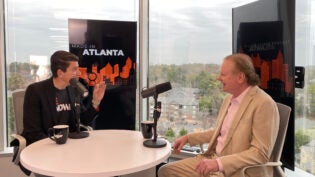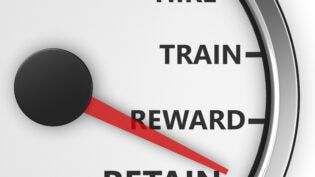
In the open-talent economy, employees have options, and talent is a scarce resource. Business leaders are thinking like talent economists and sustainability directors. Leaders know that in order to keep top talent, they must introduce environmental, social and governance strategies, provide collaborative work, create environments conducive to multiple generations, allow for flexible work schedules, and focus on happiness. People are searching for meaningful mission statements and high quality work environments.
Open Talent Economy
By 2020, 50% of the people producing companies’ outcomes won’t even work for them. Welcome to the talent war of the open talent economy. Currently, 14 of America’s 100 best companies have at least 50% of their workers residing outside of the US, while 27 of the 100 best have at least 25% outside. In the open-talent economy, talent searching means rethinking the labor supply chain, focusing on projects, developing partnerships, and developing a culture of trust and innovation. Today, the talent search extends across the globe now. The BRIC economies and Indonesia, Malaysia, the Philippines, South Africa, Thailand, Turkey, and Vietnam boast sought after talent. Talent seekers of the open-talent economy have to function like economists, directing the allocation of a scarce resource. The old method of hiring workers around fixed machines and structures is dying slowly, and there’s a transition from traditional approaches.
Building to Sustain
Sustaining partnerships, customers, and employees is more valuable than ever, especially in the open-talent economy. To sustain their employees, business leaders are articulating, building cases for, and aligning ESG strategies and initiatives. They develop leaders who understand talent ecosystems and hire leaders who can function as sustainability directors. The 2013 Fortune Best Companies were uniquely able to sustain employees, with the lowest turnover rates. These findings were correlated with paying attention to employee feedback, use of the newest technologies, cross-cultural collaboration, and developing culture and values. Another uniqueness of Fortunes’ Best Companies was a focus on employee development. Best companies devoted 66 hours of training to full-time salaried employees and 53 hours to full time hourly employees. Also, they worked through career road mapping with employees, but left succession up to employees to drive on their own. Lastly, according to Deloitte Human Capital, top companies don’t search for cookie cutter leaders, because leadership theories can’t keep pace with jagged markets, the velocity of disruptive marketplaces, and perpetual uncertainty. Instead, they focus on resilience, agility, and adaptability.
Want Meaning
The 21st century employee wants meaning in their work. Consumers and stakeholders also have a growing desire for meaning. In response, organizations are developing more strategies that tackle social and economic challenges, and they’re giving more effort to create purposeful meaningful environments for employees. Companies are creating more collaborative work environments where employees engage and get to know their co-workers, and they’re integrating environmental, social, and governance (ESG) initiatives into their strategies. Many are “innovating to zero” and proactive with “Cleantech.” Smart companies, according to Deloitte, use these initiatives as catalysts to improve their businesses, refresh their brand and innovate. They claim integration of ESG initiatives are leading to higher profits and lower costs and risks. Deloitte’s research points to 5 factors driving this trend: a loss of trust in businesses, stakeholder pressure, natural resource pressure, social media pressure, and supply chain pressure.
Happiness = Business Success
400 relaxation drinks are bursting into one of the hottest new markets in America. It’s a $521 million annual industry, and annual growth is projected at 20%. The boom in relaxation drinks is in response to hyped-up and stressed-out Americans. 85% of American’s say their stress is a serious health issue, according to a FOX Small Business report, and many businesses are making employee wellness programs a top priority. Program offerings include fitness incentives, healthy food options, healthcare opportunities, and flexibility. A Deloitte Human Capital report shows that 68% of women with children would rather have more free time than make more money, and 62% without children feel the same way. 40% of professional men say they work more than 50 hours per week, and 80% of them would like fewer hours. Organizations are shifting to become elastic workplaces. Organizations are sustaining employees, as they experience better balance. From schedule flexibility to management goofing around, companies that implement stress-reducing activities and increase employee happiness are finding increased business success.
Quality with Generations
Generations are converging in the workplace, the most drastic being Gen Y and Gen U. Generation U (unretired) is staying in the workplace. The AARP believes that 80% of baby boomers will keep working full or part-time past their retirement age. 48% are expected to work past 65 and 13% into their 70’s. The unretired are expected to drive 93% of growth in the US labor market through 2016. By 2025, the opposite end of the generation spectrum in the workplace, Generation Y, is expected to make up 75% of the workforce. This group makes for the most educated, affluent, and assertive generation in history, and top companies are adjusting to accommodate both ends of the spectrum. They are maintaining older communication techniques preferred by Gen U, staying cutting edge with technologies that Gen Y will use long into the future, like Gamification, and training employees about underlining generational differences.
Why this matters
“I firmly believe we can create a poverty-free world if we collectively believe in it. In a poverty-free world, the only place you would be able to see poverty is in the poverty museums. When school children take a tour of the poverty museums, they would be horrified to see the misery and indignity that some human beings had to go through.” – Muhammad Yunus, Grameen Bank
- The latest Human Capital Institute and Interaction Associates report showed that employees of High-Performing Organizations (HPO’s) trust colleagues are working diligently to accomplish shared goals, feel safe communicating ideas and opinions together, have shared commitment and responsibility, are treated fairly, and believe the culture rewards honesty.
- HPO’s also make it their priority for retention, attraction, deployment, and development of talent.
- In the open-talent economy, key talent has access to more options than ever before.
- Studies show that increased happiness leads to increased business success.
- Who doesn’t want to have more fun, especially if it impacts the bottom-line?
- People crave meaning and purpose.
- People want to connect with others, and collaboration can be used to increased efficiency.
- Gen U can be used to fill talent positions that would otherwise be challenging to fill.
How to seize the embedded opportunities
- Emphasize development of the compassion, connection, and commitment pillars of The Trust Edge.
- Think like a talent economist and sustainability director. Encourage your team to think similarly and consider creating a new position that focuses on sustaining employees, customers, and stakeholders.
- Use Gen U to develop younger generations through teaching, mentoring, and wisdom sharing.
- Develop ESG initiatives and integrate them into the corporate strategy.
- Provide more flexibility to employees and shift to a project and outcomes paradigm.
- Pay attention to these – Deloitte’s 2013 Human Capital report recognizes these 10 transitions from traditional approaches to emerging trends in hiring: hierarchical to networked, direct to coach, top-down to bottom-up, process-focused to outcome-focused, autocratic to democratic, measures to improves, external rewards to intrinsic rewards, fixed organization to matrix organization, annual cycle feedback to just-in-time feedback, and weakness-based to strength-based.
- Develop environments conducive to all generations and train on underlining generational differences.
- Provide wellness programs.
- Key opportunity for competitive advantage: talent economists.
This article was originally published by David Horsager
Published: June 16, 2014
2421 Views
2421 Views












